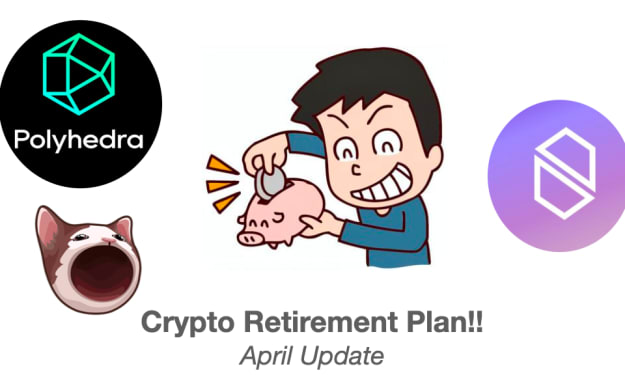A Step-by-Step Guide to Metaverse Smart Contract Development
Metaverse Smart Contract Development - Guide

Metaverse is a decentralized, open-source blockchain platform that enables developers to create smart contracts and decentralized applications (dApps). Smart contracts on Metaverse operate on a consensus algorithm called PoS+ (Proof of Stake Plus), which aims to provide a more efficient and scalable blockchain solution. In this guide, we will walk through the process of Metaverse smart contract development, from setting up a development environment to deploying a smart contract on the Metaverse blockchain.
Step 1: Set up a development environment
To begin with, you need to set up a development environment to write and test your smart contract code. For this, you will need to install the Metaverse wallet and the Metaverse Full Node on your computer. The wallet provides a user interface for interacting with the blockchain, while the full node provides the necessary tools to create and deploy smart contracts. You can find the download links and installation instructions on the Metaverse website.
Step 2: Write the smart contract code
Once you have set up your development environment, you can start writing the smart contract code. Metaverse smart contracts are written in Solidity, a programming language similar to Ethereum. You can use any text editor or Integrated Development Environment (IDE) to write your code. Here is an example of a basic smart contract:
pragma solidity ^0.5.0;
contract MyContract {
uint public myVariable;
function setVariable(uint newValue) public {
myVariable = newValue;
}
}
This smart contract defines a variable called myVariable and a function called setVariable that sets the value of myVariable. Note that the public modifier on the myVariable variable generates a getter function automatically, allowing anyone to read its value.
Step 3: Compile the smart contract
After writing the smart contract code, you need to compile it into bytecode that can be executed on the blockchain. To do this, you can use the Solidity compiler, which is included with the Metaverse Full Node. You can compile your contract by running the following command in the terminal:
solc --bin MyContract.sol
This will generate a bytecode file called MyContract.bin.
Step 4: Deploy the smart contract
Once you have compiled your smart contract, you can deploy it on the Metaverse blockchain. To do this, you will need to create a deployment transaction using the Metaverse wallet. Here is an example of a deployment transaction:
{
"version": 0,
"assetId": "0000000000000000000000000000000000000000000000000000000000000000",
"type": 2,
"nonce": 123456,
"sender": "EDGtxc28n5nCzdcbf5ZY5SEtDdMQJS",
"fee": 10000000,
"timestamp": 1556789999,
"data": {
"code": "606060405260008055341561001357600080fd5b60d0808061001e6000396000f3fe6080604052348015600f57600080fd5b506004361060285760003560e01c806360fe47b114602d5780636d4ce63c14607a575b600080fd5b607a60048036036020811015604257600080fd5b8101908080359060200190640100000000811115609857600080fd5b820183602082011115609a57600080fd5b803590602001918460208302840
The deployment transaction includes the bytecode of the smart contract in the data field. To deploy the smart contract, you can use the Metaverse wallet's "Smart Contract" tab and select "Deploy Contract". You will need to specify the contract bytecode and other details, such as the contract name and parameters.
Step 5: Interact with the smart contract
After deploying the smart contract, you can interact with it by sending transactions to its functions. To do this, you will need to create a transaction object that specifies the function you want to call and its parameters. Here is an example of a transaction object:
{
"version": 0,
"assetId": "0000000000000000000000000000000000000000000000000000000000000000",
"type": 2,
"nonce": 123457,
"sender": "EDGtxc28n5nCzdcbf5ZY5SEtDdMQJS",
"fee": 10000000,
"timestamp": 1556789999,
"data": {
"method": "setVariable",
"params": [
"42"
]
},
"remark": "Interacting with MyContract"
}
This transaction calls the setVariable function on the MyContract smart contract with a parameter of 42. You can send this transaction using the Metaverse wallet's "Smart Contract" tab and selecting "Invoke Contract".
Step 6: Test and debug the smart contract
After deploying and interacting with your smart contract, you should test and debug it thoroughly to ensure it works as expected. You can use the Metaverse Full Node's command-line interface to test your smart contract by sending transactions and verifying their results. You can also use the Metaverse wallet's "Smart Contract" tab to view the contract's state and transaction history.
Conclusion:
Metaverse smart contract development provides a powerful toolset for creating decentralized applications and smart contracts on a secure and efficient blockchain platform. By following the steps outlined in this guide, you can set up a development environment, write and deploy a smart contract, and interact with it on the Metaverse blockchain. With the increasing adoption of blockchain technology, Metaverse smart contracts offer a promising solution for creating decentralized, trustless systems that can operate transparently and securely.
About the Creator
Dean Johns
I'm Dean Johns, CEO of Shalong Pvt Lmt. And also a Leading crypto inverstor over Past 8 Years. Giving Tips & Tricks to all People about Crypto Inverstment who Wants to inverst Your Money on Crypto in Future Days.






Comments
There are no comments for this story
Be the first to respond and start the conversation.